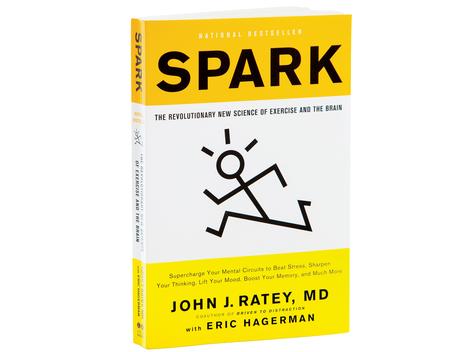
by Michelle | Nov 5, 2017 | Move Well
By Michelle Jenck, YOW Coordinator
Adventist Health’s annual “Diabetes & You” seminar is Tuesday, November 7th. Local medical professionals will present information about Diabetes prevention and management, including the impacts on dental and eye health. The event will be held at the Tillamook Adventist Church, 2610 First Street, from 9 a.m. to 3 p.m.
Diabetes is a chronic metabolic disease in which blood sugar levels are above normal. In the case of Type 2 Diabetes, which makes up about 95% of all diabetes cases, this occurs when the body becomes resistant to, or does not properly respond to the hormone, insulin. According to the 2015 Oregon Diabetes Report, “Diabetes can cause nerve and kidney damage, skin infections, blindness and can lead to disability and premature death if not carefully managed. Diabetes also adversely affects the cardiovascular system and can contribute to high blood pressure, high cholesterol and heart disease.”
Oregon’s county rankings data indicates that approximately 9% of Tillamook County residents have Diabetes but many more go undiagnosed or are considered pre-diabetic. There is a bit of good news, however, in that Type 2 Diabetes and many of the above-mentioned conditions can be prevented and managed through key lifestyle interventions including: avoiding tobacco, adopting healthful eating, and increasing physical activity.
Many of us know that being more active is good for us but we don’t always know what the best form of activity is or how much or how often we need to do it. In addition to this, it can be challenging to adopt and maintain new habits. In their Exercise and Type 2 Diabetes Fit Facts, the American Council on Exercise (ACE) states that exercise is key for control and treatment of diabetes because it decreases insulin resistance. In other words, exercise helps us maintain optimal blood sugar levels. Cardiovascular exercise and resistance training both work to decrease insulin resistance.
Cardiovascular exercise can include moderate to vigorous physical activity (MVPA) such as swimming, biking, or jogging. Even brisk walking can count as MVPA. A good rule of thumb is to use the “talk test.” If you can easily carry on a conversation during your activity, it would be considered low intensity (not MVPA). At a moderate to vigorous level of intensity, you can still have a conversation with someone but find yourself taking increasingly more breaths between words as the intensity increases.
The CDC recommends 150 minutes per week of moderate-vigorous physical activity. Doing an activity for 30 minutes, at least five days per week, will help you reach that goal. If 30 minutes of activity at one time is too much, it can be broken down and then built up over time. The idea is to get the heart rate up on a regular basis to increase cardiovascular endurance and resting metabolism. Frequent, intense activity forces the body to create adaptations that lead to improved health.
Research shows that increased muscle or lean body mass also helps to reduce insulin resistance. The mechanisms behind this are complex. The important thing to understand as it relates to muscle is that it is very metabolically active, meaning it burns more calories, than other tissues of the body. Not only does this help with weight management but it also affects our resting metabolic rate and blood sugar levels in that muscle takes up glucose, or sugar, as fuel. Resistance training is recommended at least two days per week and can be performed in as little as 20 minutes. Basic body weight exercises such as push-ups, squats and lunges work for many people. Resistance bands, free weights and even yoga are other effective strategies.
According to Sue Phillips-Meyer, Diabetes specialist at Adventist Health and coordinator of the annual seminar, “When it comes to exercise, I like to compare the body’s mechanism of moving sugar into the cell, to a bicycle chain. Without exercise, that chain becomes rusty and inefficient. With regular exercise, the chain stays supple and works efficiently. The well-exercised chain even works while you are “coasting,” helping improve your blood glucose levels twenty-four hours a day.”
Dedicating time to physical activity each day is key. It is also important to find activities you enjoy – or can at least tolerate – given the return on investment. Health gains made from both cardiovascular and strength training last only as long as the activities continue to be performed and only if at an intensity level that challenges the status quo. In other words, “use-it-or-lose it.” The cost of doing nothing is too great. By taking charge of your own health, you can prevent and even reverse Type 2 Diabetes.

by Michelle | Oct 14, 2017 | Move Well
By Michelle Jenck, M.Ed., YOW Coordinator
We don’t know what we don’t know. What sounds like an obvious statement is really the fundamental concept behind the “Mindfulness” movement we are hearing and seeing so much about. Awareness creates the potential for change. If we are seeking change, we must first become aware.
Too often, we find ourselves in a frenzied, unhappy and unsettled state-of-mind. Many people simply feel there are not enough hours in a day. Cultural norms tell us that multitasking is good, that “busy-ness” is both normal and noble. People are told to learn to say “no” but find it difficult because everything seems to be of equal and vital importance.
This constant state of activity and worry places a heavy toll on both the mind and the body. It can contribute to anxiety, depression, addiction and damaged relationships. An overloaded nervous system, in a constant state of fight-or-flight, produces chronic stress that has far-reaching effects.
Enter Mindful-Based Stress Reduction. Through a regular practice of cultivating awareness of experiences and sensations and learning to view them without judgement, things begin to fall into place. Priorities shift and emerge. Our sensory system remains calm amidst a stressful day. We experience life with a sense of clarity and objectivity.
We can only change something if we know what the root of the problem is. A mindfulness practice strips away every voice – including our own. We become an interested observer of what is happening in the body and the mind. It is like watching a movie with flashbacks and foreshadowing. We are “let in” on the back story that explains the characters’ behavior.
The practice itself can be as simple as spending five minutes each day, sitting quietly, breathing deeply and simply being present with acceptance. We accept who we are, where we are, just as we are in that exact moment. Thoughts may come and go and that’s okay. Often, they provide clues as to the source of our anxiety, past hurts, and frustrations. Rather than stuff them or block them, we allow these thoughts and feelings to appear. We greet them at the door but we don’t invite them to stay.
While a regular, defined practice is ideal, we can incorporate mindfulness into everyday activities. We can catch ourselves reacting to a situation and tune into it through our mindfulness viewer. Research shows that awareness in and of itself is enough to alter patterns of behavior. It takes on a snowball effect. The more we catch ourselves, the more quickly we hit the reset button until the brain recognizes the situation as non-threatening and resets itself. It is important to remember that, when we catch ourselves in an unhealthy habit, we do not attach any negative self-criticism. Acceptance without judgement is key. Setting an intention for healthier behaviors and self-healing are equally important.
As with any new task, the more often we practice the new habit, the more automatic it becomes. And just like building our muscles or mental focus, regular practice creates a new default. Two important benefits of a mindfulness practice are nonreactivity and self-regulation. Without expressly working to develop them, these two traits emerge. We often only realize it when we catch ourselves remaining calm in a situation that would have generated fear or anger before.
Mind-body classes such as Qigong, Tai Chi and Yoga include a component of mindfulness. Locally, class schedules can be found in the TBCC course catalog under the community education, Fitness & Health section. You can also join – or even start your own – mindfulness mediation group.

by Guest | Oct 7, 2017 | Move Well
By Rachel Pettit, Farm to School Program Coordinator, Food Roots
What is farm to school?
Hands in the soil.
Seeds. Sprouts. Fruit.
Sharing and not being afraid to try something new.
Laughter. Smiles. Teamwork.
Farm to school is also a general term used to describe work being done all across the United States to connect students with local food and encourage the development of healthy lifestyle behaviors. Tillamook County is a community rich in agricultural tradition that should be celebrated and shared with children of all backgrounds, farm kid or not.
This agricultural tradition in Tillamook is both deep and wide. While people know Tillamook for dairy foods, there’s a market basket of locally produced foods grown here. Sometimes, you just need to know where to look. Fruit, vegetables, meat, fish, seafood, eggs, sheep and goat milk dairy, honey, bread, teas, and herbs are all produced in our community. Farm to school seeks to connect students with as many of those producers as possible.

Photo: Trav Williams, Broken Banjo Photography
In addition to celebrating agriculture and local food, farm to school programs also provide students with exciting opportunities to explore the world. Children are curious and eager to try new things, especially if those things are outside or involve eating! Students who participate in farm to school activities get to spend part of their school day gardening, cooking, conducting science experiments, spending time on farms, talking with local farmers who visit the classroom, and tasting all different kinds of produce.
Their seeds may not always grow, they may get a little messy, they may not love kale, but all of these students are building lifelong skills and relationships with their neighbors in the process.
In May, a class of students from Nehalem Elementary School spent almost their whole day on a field trip to Nehalem River Ranch. This summer, students from Nestucca Valley Elementary School harvested 147 pounds of produce and sold it at the Pacific City Farmers Market. And this year, students at eight schools in Tillamook County will taste new foods grown in their school garden or on a farm nearby.
Farm to school programs may be small, but they have big impacts on health and economy. Students who participate are more likely to eat fresh fruits and vegetables at school, and are more likely to ask for extra veggies at home. They do better in school, especially in science, and have positive behavior changes. Farmers gain exposure, and families learn where they can buy local foods.

Photo: Trav Williams, Broken Banjo Photography
School gardens and Food Roots’ farm to school program is part of student life at Nehalem Elementary, Garibaldi Grade School, South Prairie Elementary, Tillamook Junior High, Nestucca Valley Early Learning Center, Nestucca Valley Elementary, and Neskowin Valley School. Our partnerships with the Oregon Department of Agriculture and FoodCorps help us provide regular farm to school lessons that complement what students are already learning in science, math, English language arts, and social studies.

Photo: Trav Williams, Broken Banjo Photography
Our favorite lessons are out in the garden planting and caring for vegetables, or cooking simple, tasty recipes in the classroom with local produce. We also conduct regular all school Tasting Tables, participate in school Family Nights, help maintain school gardens, organize field trips to local farms or farmer visits to classrooms, and we run the School to Market project where students grow produce and sell it at market.

This year we’re also celebrating National Farm to School Month in October by hosting three local food open houses! All district families are welcome to attend these events! For more information about Farm to School Month, volunteering with school gardens, hosting students on your farm, or anything at all related to farm to school in Tillamook, please contact Rachel Pettit, Food Roots’ farm to school program coordinator, at rachel@foodrootsnw.org .

by Guest | Sep 14, 2017 | Move Well
When Angelica Ortiz and her family, husband, Ulises Boyso, and two sons, Damien and Hector, aged 8 and 15 arrived in Tillamook in November of 2015, Angelica was immediately hit by depression. She says, “What am I going to do? The weather, and I didn’t know anyone, and my English wasn’t very good, but I really like to be active and exercise.” Michelle Jenck encouraged Angelica to come by the YMCA and try some classes, and the rest is now history. Darcy Fugate and Galena Flores encouraged and helped Angelica. “This is something really important for me to come to the Y, and the people here have been so helpful and encouraging,” said Angelica. “This community at the Y made all the difference, the people ….it made me strong in so many ways and I realize that I am a capable person.”
Angelica started trying different classes, and then one day mentioned to Darcy, “I’d really like to learn to swim.” Darcy replied, “I can help with that – let’s do it tomorrow.”
“I surprised myself,” said Angelica. “I was afraid even of shallow water, and now I’m in water over my head, diving in and climbing on the alligator. I had a bad experience when I was little, and didn’t get back into the water and missed out on fun stuff. Now, that I know I can swim, I know I can do anything else,” she said. For a recent family vacation, Angelica insisted on going to Great Wolf Lodge to show off her newly acquired swimming skills. “My eight-year-old son was so proud of his mom,” said Angelica. “He told me I get a prize for doing the starfish float.”
Angelica hasn’t stopped there. Again with encouragement and support from Fugate, Angelica is studying for her ACE personal training certification and teaching classes at the Y. She translates the training into Spanish. The most difficult part of stepping outside her comfort zone for Angelica was her insecurity about her English-speaking capabilities. “When I’m teaching, some of the students want me to do the class in Spanish so they can practice their language skills, too,” said Angelica. “I want to encourage people to challenge themselves, and step out of their day to day lives, and excuses like they don’t have time.” Angelica’s bilingual skills are very welcome at the Y, helping the organization to improve its outreach to the Spanish-speaking community.
With all she’s accomplished, the YMCA asked Angelica to be the keynote speaker for the organization’s upcoming annual fundraising dinner and auction on September 30th. When asked to speak, Angelica says she responded, “Oh sure, I’ll do a speech. I’ve never spoken in public before, but if I can do this (swimming, teaching, and more) why not? And this is something to challenge and help others.”

Already on Angelica’s “skill list” has been wildfire fighting. And with the West on fire, Angelica, already an inspiration, she took on yet another challenge and is currently on the frontlines of the wildfires burning in Oregon. As Darcy Fugate said, “I’m so blessed to have Angelica as a friend, and I’m inspired by her more every day.”
During our interview, Angelica shared this with Darcy, “Oh by the way, I’m going back to college in the Fall to finish my business administration degree,” said Angelica. “I’m an active person, and I know that to keep my spirits up, I have to keep moving forward.” Added Darcy, “She is just amazing.”
For more information about the YMCA’s classes or the upcoming “Lasso the Moon, Shoot for the Stars” Dinner and Auction on September 30th, go to www.tillamookymca.org or visit the Y at 610 Stillwell Ave., Tillamook.

by Guest | Aug 12, 2017 | Move Well
Submitted by Ginny Gabel, Community Health Educator for Adventist Health
SPARK is an amazing read. Ratey, a Professor of Psychiatry at Harvard Medical School, might be best known for his research on ADHD, which he talks about in his book Driven to Distraction. In SPARK, he explains how the brain changes with physical activity and how these changes can be life changing.
The most dramatic effect is told in the stories of people and situations that overcome great challenges by recognizing the value of exercise. Naperville School District outside of Chicago transformed 19,000 students with the lowest test scores in Math & Science into the fittest and smartest students in the nation. Their Science test scores became the highest in the world. How? By teaching fitness as lifestyle not fitness as in sports.
Dr. Ratey explains how our brain is far more elastic and regenerating than ever thought. This means movement, aka exercise, leads to less pain, boosts your dopamine which elevates your mood, increases ability to focus and pay attention. Exercise improves serotonin (a neurotransmitter) which again improves mood, moderates impulse control, counteracts damaging effects of stress and improves learning. Being active keeps our brain growing and forming new neuron connections way into our senior years, therefore less dementia is seen in those engaging in exercise on a regular basis. Chapters on addiction, attention deficit, anxiety, depression, stress, dealing with hormonal changes, and aging explain how these disorders can be greatly improved or eliminated by brain-stimulating exercise.
Ratey ends with the following: “My hope is that . . . you grab your gym bag instead of the remote, or spend time on the field rather than the sidelines. From your genes to your emotions, your body and brain are dying to embrace the physical life. You are built to move. When you do, you’ll be on fire.”
So, run, don’t walk to your nearest library or bookstore to get this brain stimulating book.

by Guest | Aug 3, 2017 | Move Well
By Ginny Gabel, RN, Community Wellness Education, Tillamook Regional Medical Center
Fog was settling all over the town, dark, thick and overwhelming, making the street lights barely visible. Voices without faces were calling out in alarm and sounds of people crashing into garbage cans for lack of visibility were heard from everywhere. It was 4 pm and should have been light enough to see but for the fog, the thick heavy fog. London was used to the fog, but this time after 5 days of absolute darkness people were in a panic. This was the Great Smog of London in 1952. A period of cold weather combined with absolutely windless conditions caused by an inversion of air. Pollutants mainly from coal particles formed a thick layer of smog trapping the city of London in the worse smog ever known. Over 12,000 people died and 200,000 were ill with respiratory problems in those 5 days. Fresh air was unavailable until the weather changed.
Fresh air offers a great benefit to our health. Congested city environments, which increase the amount of foul air, doubles the risk of heart attacks. While those who live by bodies of water, like the ocean with its spray, running rivers, and even by a still lake enjoy the mood elevating effect. Outdoor environments around bodies of water and trees like evergreen and cedar have more negatively charged ions which is good. Ocean air from the mid-Pacific contains about 15,000 particles per cubic inch. In contrast, air from large cities can contain 5,000,000 particles per cubic inch. Ions are tiny, electrified particles of matter. Ionization along with oxygen and the absence of pollutants help to make “fresh “air. Fresh air may contain as many as 5 – 10 times more negative ions than stale air. Negatively charged air has been shown to kill germs, decrease the survival of airborne bacteria and viruses, vitalize the blood and slow tumor growth. While positively charged air results in fatigue, headaches, dizziness, and nausea.
GET OUTSIDE- Did you know staying inside is hazardous to your health? Indoor air is 2- 5 times more polluted than outside air. Dust and toxic gases are given off by the furniture, carpets, drapes in your home along with the paint and cleaning supplies used. Fumes from these compounds are linked to asthma, central nervous damage and some cancers. You can however, improve the ventilation, remove the offender and use an air cleaning machine. One live plant like a palm or a fern can purify 90% of the toxic chemicals in the air of an average room.
Earth and sky, woods and fields, lakes and rivers, the mountain and the sea, are excellent schoolmasters, and teach some of us more than we can ever learn from books. John Lubbock
Fresh air is also dependent on trees. Trees draw particulates, ozone and pollutants from the air into their leaves cleaning the air. The University of Chicago studied the number of trees in Toronto Canada and found a relationship to public health. Their study showed that planting ten trees per city block were related to 1% increase in a person’s health. People living on those blocks suffered less from obesity and hypertension as compared to neighborhoods with fewer trees and had the same health impact as being 7 years younger.
People living in a neighborhood with less than 10% tree canopy were much more likely to have symptoms of depression, stress and anxiety a Survey of Health of Wisconsin found. Many other studies are examining how higher amounts of green space in cities leads to mental health benefits. Even the impact of outdoor exercise and community gardening, explored by Harvard School of Public Health, links to mental health benefits such as recovery of mental fatigue, reduces stress and improved restoration. Spending more time in nature restores the ability to concentrate and reduces mental fatigue, a new idea called “restoration theory”. The focus of Last Child in the Woods: Saving Our Children from Nature-Deficit Disorder by Richard Louv, is to bring together cutting-edge research showing that direct exposure to nature is essential for healthy childhood development in physical, mental and spiritual. Nature is a potent therapy for depression, obesity and ADD. Alienation from nature damages children and adults and shapes unhealthy communities.
“We can never have enough of nature.” Henry David Thoreau
The University of Arizona reports that some German hospitals are beginning to use rock climbing as a new treatment for depression. A recent study involved 100 individuals in a bouldering intervention. Participants climbed for three hours per week for 8 weeks and according to Beck’s Depression Scores, improved 6.27 points as compared to the non-bouldering group improvement score of 1.4 points. The group was climbing boulders or moderate walls without the need for ropes or harness. While climbing builds muscle and endurance the participants also reported immediate feelings of accomplishment, increase feelings of self- worth and increased enjoyment with the social contact, all very important elements in treating depression. Not measured was the effect of being outdoors among the sounds and smells of nature, the sunshine and the views.
It’s time to get out of the fog and go outside! Ride the rails! Explore the tide pools at the beach! Camp by a stream. Search for salamanders. Walk the trail to Kilchis Point! Improve your mental health!
“I go to nature to be soothed and healed and to have my senses put in order.”
-John Burroughs











